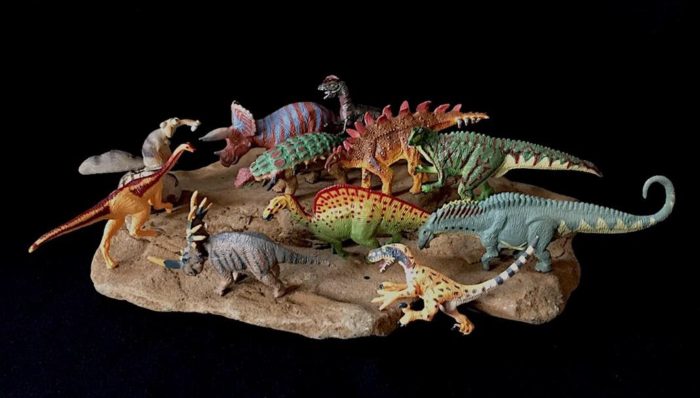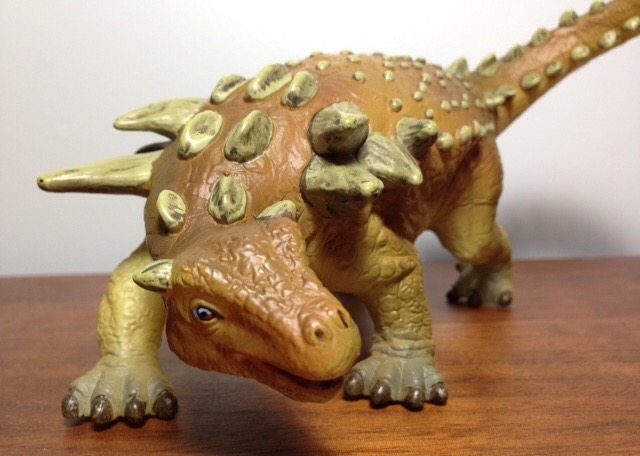There are quite a number of fossils that stun the layman aswell as the professionell for their quality of preservation. Finds enclosed in Burmese amber, Chinese or German limestone come to mind, revealing large numbers of numerous species in outstanding quality. In common they have, that most of the species preserved are comparably small….
Classification: Nodosaur
Review: Zhejiangosaurus (Vitae)

While a lot of dinosaur names are quite a challenge for the laymen to be read and correctly spelled, the ones inspired by Chinese locations and names may even be a serious challenge to the dinosaur expert. Zhejiangosaurus comes as one of the easier names, but maybe one you do not really need to remember…..
Review: Borealopelta (CollectA)

Before we sink our teeth into a toy that is based upon one of the most exciting fossil discoveries ever made, I have a few thanks to give out. First I would like to thank CollectA for supplying this sample and its continuing support to the writers at the Dinosaur Toy Blog. I also would like to thank Suspsy, who has made this review possible.
Review: Polacanthus (Definitely Dinosaurs by Playskool)

Review and photos by Art Rex, edited by Suspsy
Before the release of Jurassic Park in 1993, Playskool’s Definitely Dinosaurs was one of the best brands of prehistoric playtime, rivaled only by Tyco’s Dino-Riders. Most of the Definitely Dinosaurs were relatively simple in design, almost cartoonish to play to a younger demographic.
Review: Animantarx (Schleich)
Review: Prehistoric Animals (Panini, review part 2)

Figure numbers 13 to 15 are a trio of marine reptiles, and their dark blue colour works very well for aquatic animals.
Review: Mini Figures Collection (Battat)

The Battat line of 1:40 scale dinosaurs is so famous that it needs little introduction. Rightly so, as these figures are some of the best representation of dinosaurs in toy form. In fact, even after 20+ years, the line is still is considered one of the best.
Review: Polacanthus (Papo)

The Early Cretaceous Wessex formation in England is rich in vertebrate fossils, including dinosaurs like Baryonyx and Iguanodon, pterosaurs like Caulkicephalus, many kinds of fish, and even some fragments of small mammals. Today we’ll take a look at one of the most heavily armored denizens of Early Cretaceous Eurasia, Polacanthus, as depicted by Papo.
Review: Edmontonia (Tyco)









